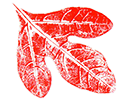
Shrubby St. John’s wort (Hypericum prolificum) is a native shrub throughout most of the eastern half of the U.S. It can be 2-5 feet tall and grows in a wide variety of soils. It grows in full sun to partial shade, but prefers more sun. In recent years, shrubby St. John’s wort has also grown in popularity for planting in native wildflower gardens and pollinator gardens.
In Kentucky, shrubby St. John’s wort blooms primarily in July and sometimes into August. It produces lots of bright yellow flowers that make the plant almost look like it is glowing. The bright yellow flowers produce lots of pollen, but no nectar. However, this doesn’t stop the bees from visiting the flowers. Bees are highly attracted to the flowers. Bumble bees are the primary natural pollinators for shrubby St. John’s wort, but honey bees also regularly visit the flowers to collect pollen. It is common to watch bumble bees and honey bees gather huge basket loads of bright yellow pollen which they take back to their colonies and turn it into brood food.
Shrubby St. John’s wort is also an important host plant for several species of butterflies and moths. The caterpillars of the gray hairstreak butterfly and several species of moths will feed on the foliage. The caterpillars of the wavy-lined emerald moth feed on the flowers. (This one of the inchworms that attaches flower pieces to its body as camouflage.) Although caterpillars and a few other insects will eat the foliage or flowers, mammals tend to leave the plant alone. This makes it a great landscape plant for areas with high deer or rabbit populations.
If you are growing shrubby St. John’s wort in a landscape setting and it starts to get too tall, you can trim it in the early spring before it starts to leaf out. The flowers bloom on new growth, so make sure you don’t wait too long to trim it or you’ll lose a year’s worth of flowers. I encourage anyone with a sunny to mostly sunny location who wants a native shrub for pollinators to consider shrubby St. John’s wort. It is one of my favorite summer blooming shrubs.

This article was part of Shannon’s original Kentucky Pollinators and Backyard Wildlife blog which evolved into the blog for Backyard Ecology.

Backyard Ecology: Exploring Nature in Your Backyard
Nature isn’t just “out there.” It’s all around us, including right outside our doors. Hi, my name is Shannon Trimboli, and I am the host of Backyard Ecology. I live in southcentral Kentucky and am a wildlife biologist, educator, author, beekeeper, and owner of a nursery specializing in plants for pollinators and wildlife conservation. I invite you to join me as we ignite our curiosity and natural wonder, explore our yards and communities, and improve our local pollinator and wildlife habitat. Learn more or subscribe to my email list at www.backyardecology.net.

Leave a Reply